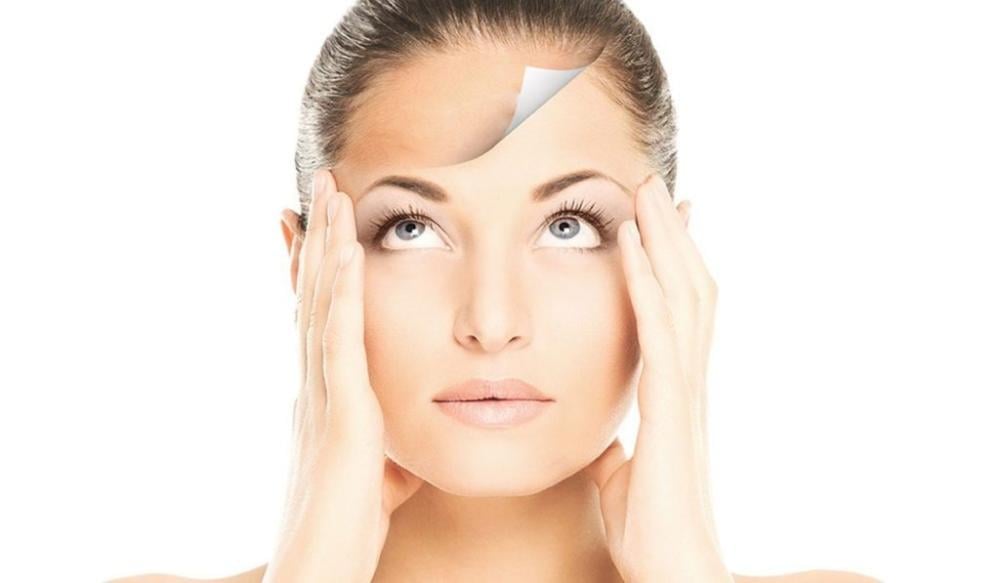The most common complaint in dermatology clinics is often, "How can I lighten my skin quickly?" The truth is, there is no magic method or mask that guarantees instant skin lightening. While natural recipes may provide immediate freshness, understanding the cause of skin darkening is crucial. Consultation with a specialized dermatologist helps determine the most appropriate method or treatment to lighten and even out skin tone, as discussed in the following article.
What Causes Skin Darkening?
Your skin gets its color from a pigment called melanin, produced by specialized cells known as melanocytes. When these cells are damaged or unhealthy, it affects melanin production. If your body produces an excess of melanin, your skin becomes darker. This can happen due to various reasons, including:
- Exposure to the sun without protection, the most common cause of skin darkening, sunburns, facial dark spots, freckles, and other sun-related issues. It's important to note that even sunscreen does not guarantee complete protection.
- Harsh chemicals in skincare products, such as perfumes and soaps.
- Hormonal imbalances, as seen in melasma or pigmentation caused as a side effect of birth control medications.
- Skin injuries, even with healed wounds or acne scars, can leave dark spots or scars darker than the surrounding skin.
- Some medical conditions like Addison's disease, where the adrenal glands don't produce enough hormones, making the skin appear dark in certain areas.
- Aging, as the size of pigment cells increases, causing uneven dark patches, age spots, and senile lentigines.
Is Skin Lightening Possible?
In some cases, skin darkening may naturally fade, such as post-inflammatory hyperpigmentation following allergies or acne. In other instances, treatment is necessary for skin lightening and evenness. The approach depends on the cause and severity of skin darkening.
While some instances may be addressed with natural remedies or creams, significant advancements in cosmetic and skincare options have expanded the choices beyond topical creams. Techniques like chemical peels, laser treatments, and skin lightening injections are available. The effectiveness of each method depends on the specific case, and a dermatologist can provide guidance on the most suitable approach.
It's crucial to approach skin lightening with caution, ensuring the selected method aligns with individual skin needs. Additionally, understanding that hereditary factors may limit the permanent removal of all dark spots is important. Cosmetic procedures can provide improvement, but complete removal may not always be achievable.
What Are the Best Skin Lightening Creams?
Dermatologists typically prescribe skin lightening creams to treat skin darkening and pigmentation. Although several creams are available in the market, it is crucial not to use them without consulting a doctor, as most require specific application to avoid potential side effects.
Creams containing natural extracts can be used without a prescription. These ingredients include:
- Witch hazel extract.
- Bilberry extract.
- Lemon extract.
- Milk proteins.
- Vitamin B3.
While these natural creams are safe for mild pigmentation, they may take time to show satisfactory results with regular use. They may not be effective for deep pigmentation and blemishes.
The following creams may be suitable for moderate pigmentation, but they should not be used without consulting a doctor:
- Retinoids: Dermatologists may prescribe retinoid creams, compounds derived from vitamin A that penetrate the skin, exfoliating damaged layers. Retinoids help regulate melanin production, promoting an even skin tone and improving the appearance of fine lines and wrinkles.
- Hydroquinone Creams: These are skin lightening creams that may be prescribed alone or in combination with retinoids and steroids (anti-inflammatory creams). Hydroquinone lightens dark skin patches by slowing down melanin production. It may take 3 to 6 months for hydroquinone creams to provide satisfactory results, and sun protection is crucial during use.
Salicylic Acid Creams: Salicylic acid works by exfoliating the outer layer of damaged skin, containing pigmentation, allowing the skin to renew its cells.
Kojic Acid Creams: Kojic acid is used for skin lightening.
Glycolic Acid Creams: It exfoliates the skin by removing dead cells and lightens the skin.
How to Use Skin Lightening Cream:
Your doctor will advise you on how to use skin lightening cream, and it's essential to follow their instructions to avoid side effects or adverse results. When using these creams, remember:
- Apply a small amount only to the affected skin.
- Avoid applying the cream around the mouth or near the eyes.
- Wash your hands thoroughly before and after applying the cream.
- Use sunblock to protect your skin when going out during the day.
- Adhere to the recommended duration of use by your doctor (approximately 3-4 months). Topical agents may take time to show results. Your doctor may recommend discontinuing the treatment after this period or using it less frequently.
What Is Chemical Peeling for Skin Lightening?
Chemical peeling relies on the strength of chemical substances to lighten the skin by gradually peeling off or removing the damaged layer that is prone to pigmentation and darkening. It stimulates collagen production and the growth of new cells for a brighter and younger-looking skin.
Chemical peels remove dead skin gradually, allowing healthy cell renewal. They also stimulate the production of collagen and elastin, proteins responsible for skin elasticity, helping to reduce the appearance of fine lines and wrinkles.
During chemical peeling, a chemical solution is applied to the face or specific body areas and left for a few minutes to penetrate and peel the skin's deep layers.
Chemical peeling can address various skin issues, including reducing the appearance of large pores, body pigmentation, age spots, acne, sun-induced darkening, fine lines, and wrinkles. The peels use exfoliating acids mentioned earlier but at higher concentrations and other substances such as phenol.
How to Lighten Skin with Laser:
Laser has become one of the preferred options for treating various skin issues, primarily pigmentation. There are several types of lasers for skin lightening. Some lasers work by removing the top layer of the skin to reveal a fresh, younger layer beneath, while others target and break down melanin pigment.
Laser treatment is effective for sun-induced hyperpigmentation, freckles, and dark spots on the face. Laser therapy is a highly safe method for removing damaged skin, promoting natural healing processes, stimulating collagen production, improving skin appearance, and reducing the visibility of lines and wrinkles. Laser results can be noticed within a few weeks after treatment.
Can Skin Be Lightened with Mesotherapy?
Mesotherapy is a special blend of potent vitamins and minerals prepared and injected into the skin or hair using fine needles to compensate for vitamin deficiencies. Mesotherapy can be used to treat pigmentation issues such as melasma, blemishes, dark spots, and post-inflammatory hyperpigmentation.
To lighten the skin with mesotherapy, a dermatologist injects lightening agents like glutathione and vitamin C directly into the skin layers. Significant improvement in skin appearance can be observed after just four sessions.
What Are the Risks of Skin Whitening?
Skin lightening treatments can be safe if approved methods are followed under dermatological supervision, avoiding the use of harsh chemicals without consultation. Generally, skin lightening may have some side effects, including skin irritation, eczema, uneven skin tone, rash, dry skin, sun sensitivity, skin burns (rare cases with chemical peels or lasers), and skin pigmentation issues (risk of increased pigmentation with laser use on dark skin).
Fastest Way to Lighten the Face:
Skin lightening creams typically take about four months to show satisfactory results, which can be a lengthy period for some individuals. Faster skin lightening can be achieved through techniques like chemical peels, lasers, mesotherapy, where results can be seen within a few weeks.
How to Lighten Oily Skin:
Individuals with oily skin often struggle with a shiny complexion caused by excess oils, making the skin appear dark. Oily skin is also prone to acne, leaving marks that make the skin uneven. Approaches to lighten oily skin are generally similar to those mentioned earlier. Dermatologists often prescribe retinol and salicylic acid because retinol helps treat acne, a common issue with oily skin. Salicylic acid works to eliminate excess oil, shrink enlarged pores, and remove dead skin cells that can accumulate in the pores and cause pimples and acne.

